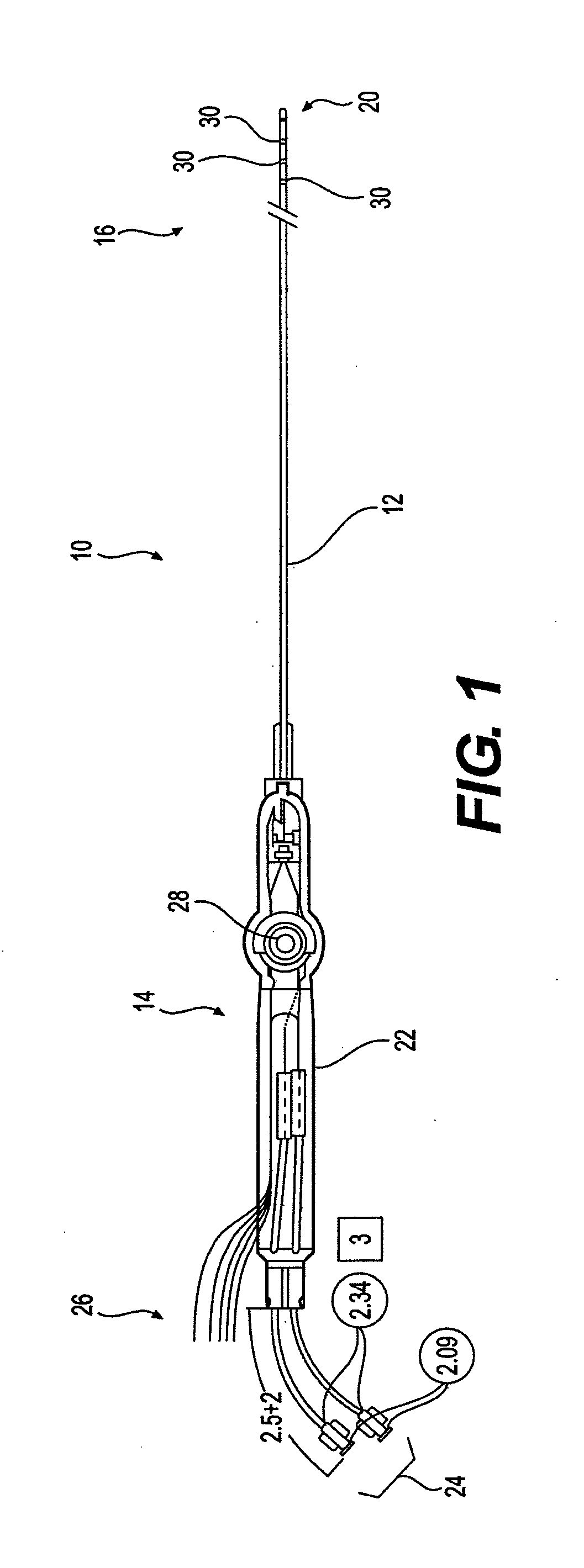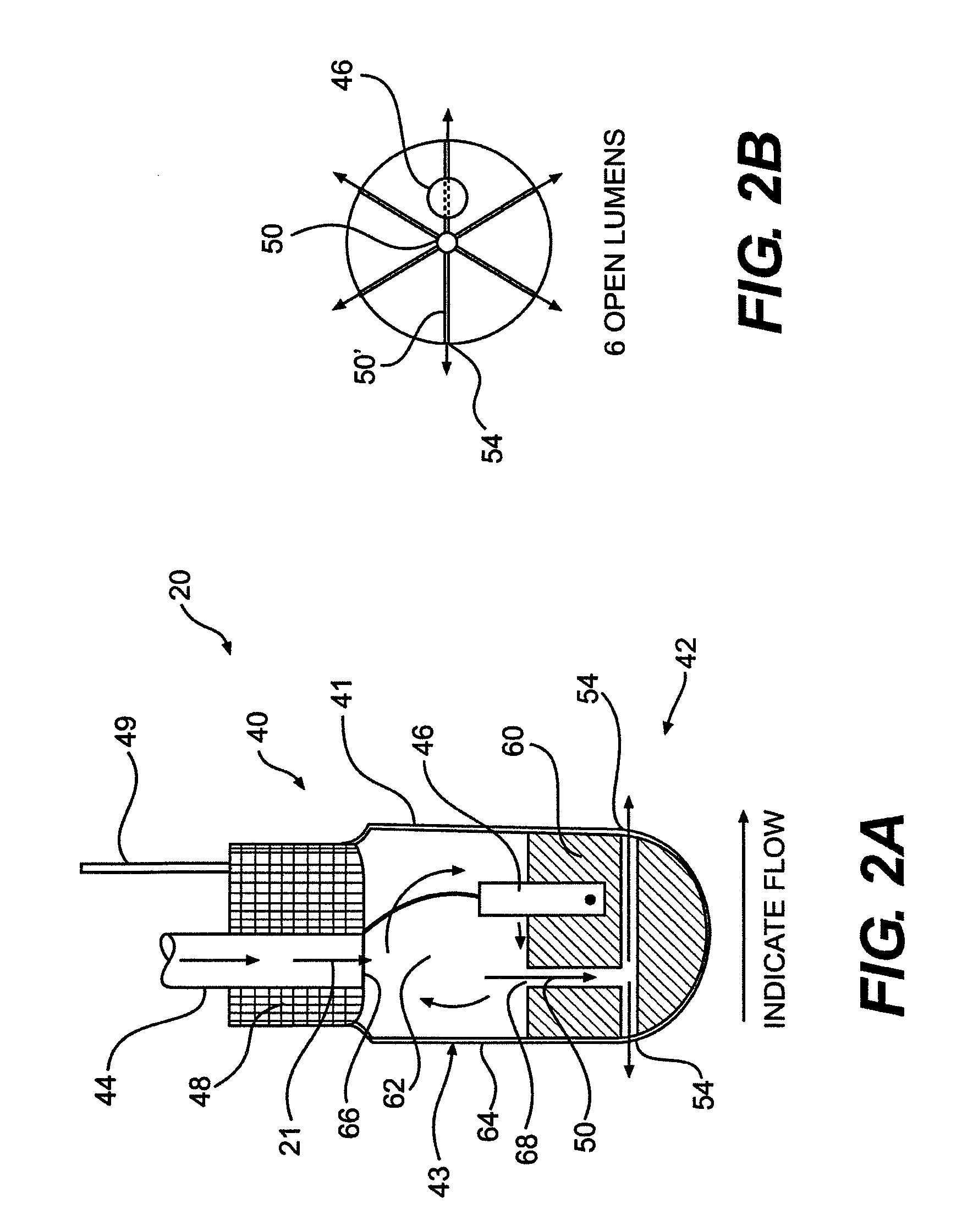Cooled ablation catheter devices and methods of use
a catheter device and cooling technology, applied in the field of cooling ablation catheter devices and methods of use, can solve the problems of difficult creation of suitable lesions using these catheters, long patient recovery period, and high invasiveness of open heart surgery, and achieve the effect of reducing the formation of coagulum and minimizing the effect of biological debris on the delivery of energy to tissu
- Summary
- Abstract
- Description
- Claims
- Application Information
AI Technical Summary
Benefits of technology
Problems solved by technology
Method used
Image
Examples
Embodiment Construction
[0030]Disclosed herein are cooled ablation catheters and methods of use. In general, the catheters include a flow path that provides cooling to a distal tip. The catheter can include an electrode tip having irrigation apertures for delivery of a cooling fluid to the environment surrounding the distal tip and / or to the surface of the distal tip. In addition, the electrode tip can comprise a proximal cooling chamber through which cooling fluid circulates prior to egress through the irrigation apertures. The proximal cooling chamber can reduce hotspots sometimes associated with conventional ablation catheters.
[0031]FIG. 1 provides a cut-away view of one exemplary embodiment of an ablation catheter device 10 for use with the distal tip structure described herein. Device 10 can include an elongate body 12 extending between a proximal section 14 and a distal section 16. The distal section includes an electrode tip 20 positioned to deliver ablative energy to tissue and is discussed in deta...
PUM
 Login to View More
Login to View More Abstract
Description
Claims
Application Information
 Login to View More
Login to View More - R&D
- Intellectual Property
- Life Sciences
- Materials
- Tech Scout
- Unparalleled Data Quality
- Higher Quality Content
- 60% Fewer Hallucinations
Browse by: Latest US Patents, China's latest patents, Technical Efficacy Thesaurus, Application Domain, Technology Topic, Popular Technical Reports.
© 2025 PatSnap. All rights reserved.Legal|Privacy policy|Modern Slavery Act Transparency Statement|Sitemap|About US| Contact US: help@patsnap.com



